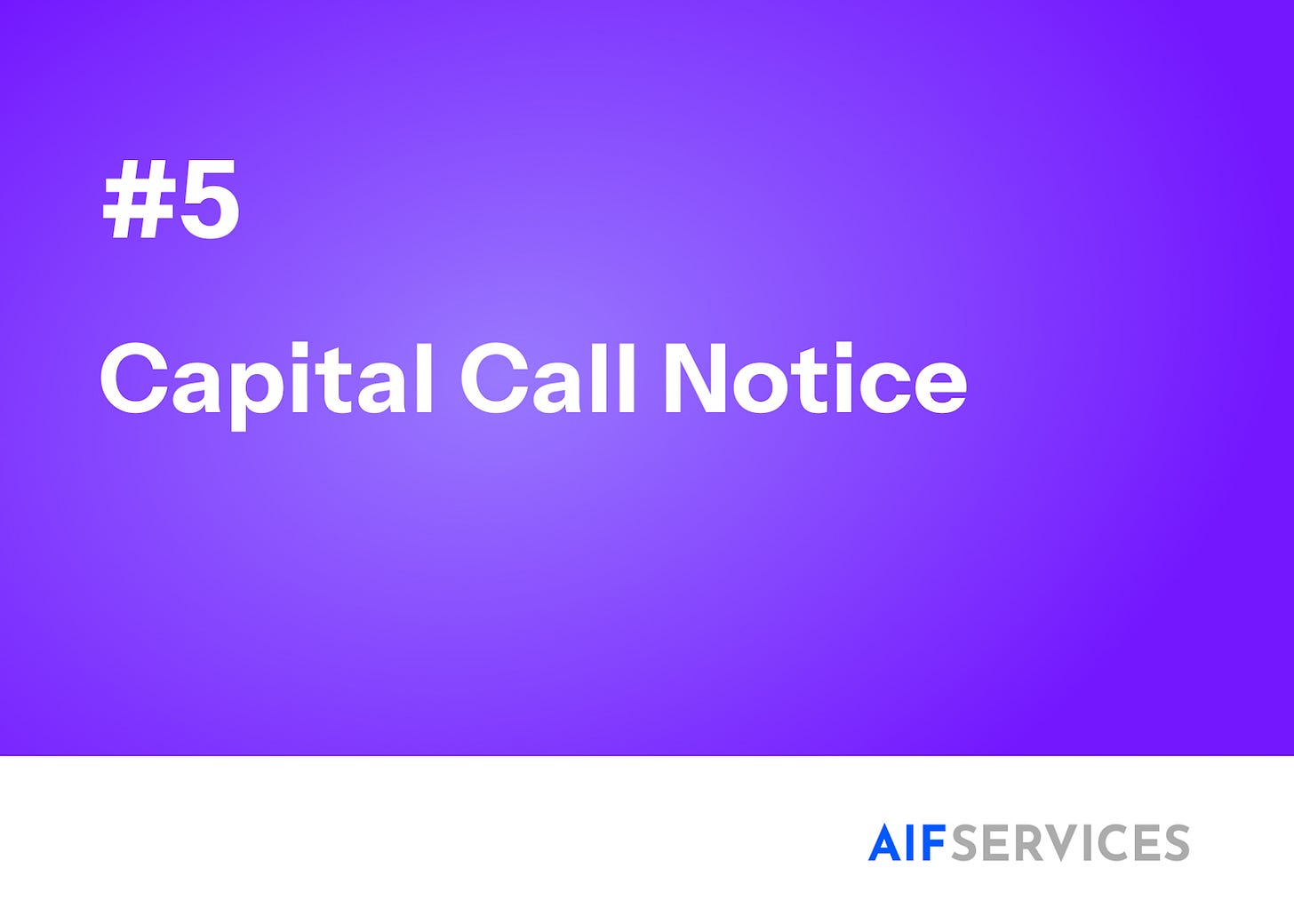Starter Guide To The Capital Call Notice
Executing Capital Commitments with Compliance and Clarity.
So far in our series, we have covered the fund’s blueprint (the PPM) and foundational agreements. With the structure established and investors committed, the next step is translating those commitments into deployable capital. This is achieved through the Capital Call Notice (or Drawdown Notice).
Why the Capital Call Notice Matters
An investor’s commitment is not an upfront transfer. Instead, managers draw capital as required. The Capital Call Notice formalizes this process. Its significance lies in:
Transparency: Investors know how their funds will be used.
Trust: Demonstrates adherence to the PPM strategy.
Compliance: Ensures operational precision as mandated by SEBI.
Legal Ground Rules: SEBI’s Framework
While SEBI does not prescribe a fixed template, compliance with key regulatory provisions is essential:
Alignment with PPM & Agreements: Contribution/Subscription Agreements must mirror the PPM (Master Circular, Chapter 2, Para 2.1.1; Chapter 4, Para 4.4).
Minimum Investment Requirement: Regulation 10(c) mandates a ₹1 Crore minimum commitment (with limited exceptions).
Joint Investors: For spouses, combined investments may meet the ₹1 Crore threshold; for others, the requirement applies individually (Master Circular, Chapter 4, Para 4.5).
Segregation of Funds: Capital must be deposited in a segregated, scheme-specific account (Regulation 20(16)).
Anatomy of a Capital Call Notice
A notice must be unambiguous and comprehensive. A standard template includes:
CAPITAL CALL NOTICE
To: [Investor Name]
From: The Manager, [AIF Name]
Date: [Date]
Scheme: [Scheme Name]
Reference No.: [CC/XXX/2024]
1. Details of the Call
Total Capital Requisitioned: ₹ [Amount]
Investor’s Commitment: ₹ [Commitment]
Pro-Rata Share: ₹ [Amount], representing [X]% of commitment.
2. Purpose of the Call
Investment: [Name of Investee Company].
Fees/Expenses: Management fees and fund expenses for [Period].
3. Payment Instructions
Beneficiary: [Scheme Account Name]
Bank: [Bank Name]
Account Number: [Number]
IFSC: [Code]
SWIFT: [Code, if applicable]
Payment Due: [Date] (10–15 business days from notice).
4. Consequences of Default
Failure to fund may trigger remedies under the Subscription Agreement, including penalties, suspension of rights, or other actions.
Example: Sunrise India Tech Fund
Fund Commitment Pool: ₹250 Crore.
Investment Requirement: ₹20 Crore in SaaS Innovators Pvt. Ltd.
Additional Requirement: ₹1.25 Crore for Q2 management fees.
Total Call: ₹21.25 Crore.
An investor with a ₹10 Crore commitment (4% pro-rata) receives a notice requisitioning ₹85,00,000.
Best Practices for Capital Calls
Provide Adequate Lead Time: Allow 10–15 business days.
Be Specific: Detail purposes clearly.
Maintain Records: Document all notices and payments for audit and SEBI compliance.
Communicate Early: Provide informal guidance before formal notices, particularly for large calls.
Previous post: Starter Guide To The Custodian Agreement
Reference: SEBI Master Circular May 7, 2024
Conclusion
A Capital Call Notice is more than a request for funds. It is a test of fiduciary discipline and investor trust. Executed properly, it ensures regulatory compliance, operational smoothness, and alignment with the fund’s stated objectives.
Disclaimer: This article is for educational purposes only and does not constitute legal or financial advice. The template provided is illustrative. The terms of your capital calls must strictly follow your PPM and Subscription Agreement. Always seek advice from qualified legal and compliance professionals.



